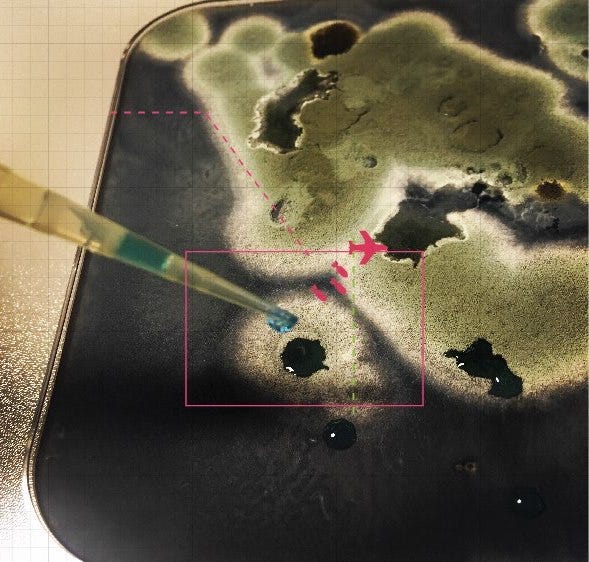Exploring the Unexpected Future of Biodigital Convergence
Written on
Chapter 1: The Unlikely Source of Inspiration
A few years ago, an unusual scent reminiscent of old cheese permeated my workspace, emanating from a most unexpected culprit: my flatbed scanner. Upon closer examination, I found a thick, moldy residue splattered across the scanner's glass, accompanied by a distinct odor. Surprisingly, this wasn't a shocking discovery; it was merely an unforeseen outcome of a research project I'd conducted days prior.
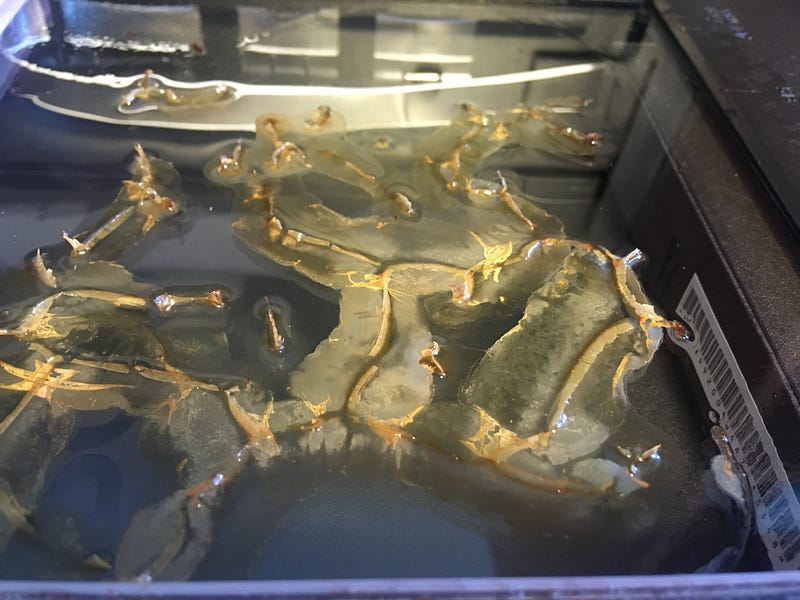
Mould Rush: The Game
Let’s rewind and explore the context behind this incident. My research project revolved around a unique game I created called Mould Rush. Imagine this: I initiated a live stream on my Twitch channel showcasing real-time mold growth on a petri dish. The game begins with an empty dish gradually becoming covered in mold until it’s entirely obscured. Using the flatbed scanner, I captured periodic images of the mold-covered dish, which were then streamed live to my audience.
To generate these growth visuals, I first introduced mold onto an agar gel-filled petri dish. I positioned the dish on the scanner bed, leaving a small 3-millimeter gap, and took scans every two minutes over several days for the live stream.
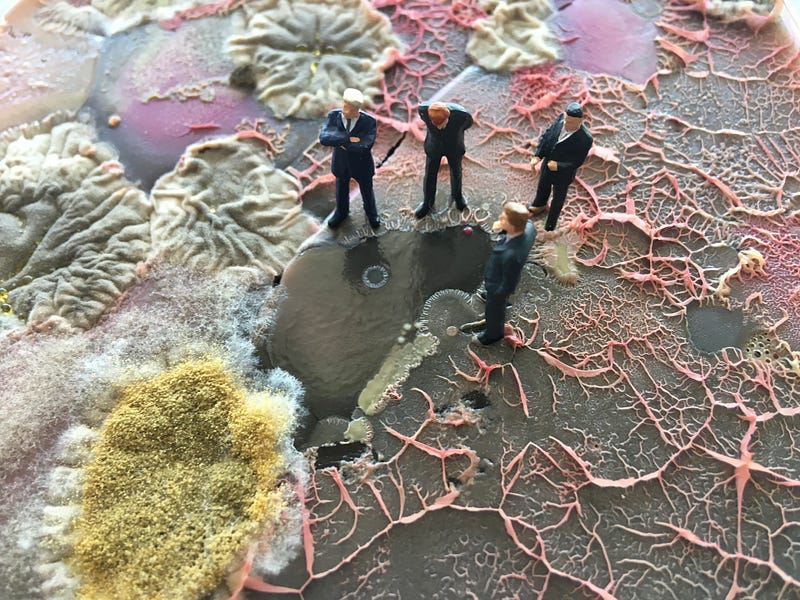
Viewers got to participate by placing bets on which section of the divided dish would conceal the mold cluster. They could also issue commands, such as activating a 'kill function' against an opponent's segment. As the moderator, I would then open the scanner and apply an antifungal solution to eliminate the selected growth. Points were awarded based on an image processing tool that detected the color of the fungal growth, translating it into scores. The more vibrant your segment, the more points you earned; however, if you lost your segment to an attack, your score would plummet.
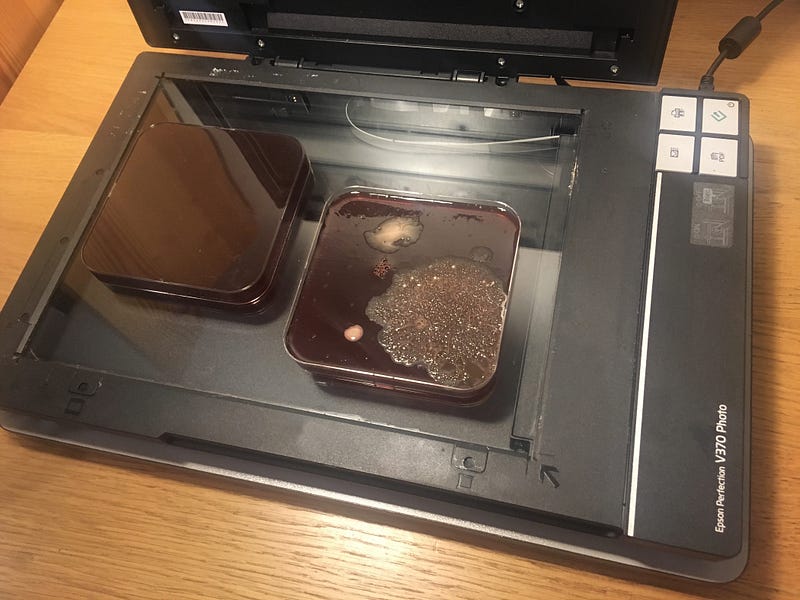
The Mouldy Ghost Glitch
During one of our Mould Rush sessions, an unforeseen glitch occurred. The scanner, working tirelessly for five consecutive days, began to overheat. While this did not affect its functionality, it inadvertently stimulated the mold culture, causing it to spread beyond its dish and onto the scanner’s surface, creating a dried-out residue. Imagine pasta boiling over and staining the stove—definitely not a pleasant sight.
This glitch disrupted gameplay. The dried patch could no longer grow, resulting in a frozen area on the live stream. Players found it challenging to ascertain whether the corresponding segment on the dish had grown or been eliminated. This led to the emergence of what we dubbed the 'Mouldy Ghost,' a seemingly inactive yet enduring feature in the game.
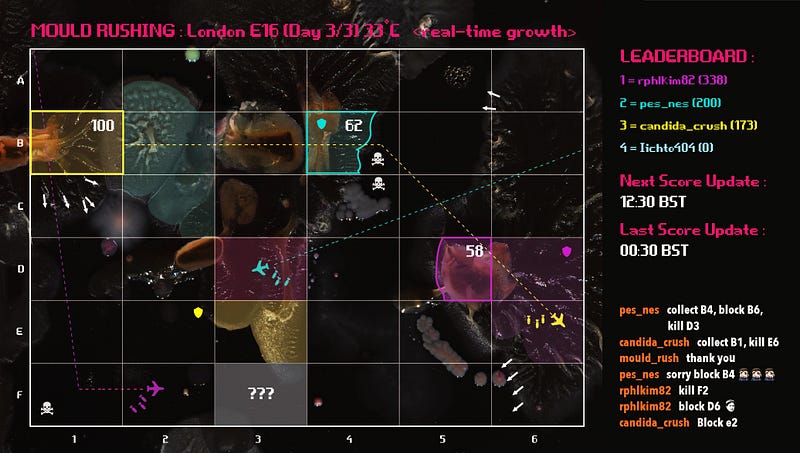
Understanding Biodigital Convergence
You might wonder why this glitch is compelling—and a bit unsettling—regarding the future of biodigital convergence, which refers to the interplay between biological processes and digital technology. The Mould Rush game exemplifies this concept in action. Although the game’s design may seem simplistic, it effectively illustrates how biological elements, like mold, engage with digital platforms through the scanner and image processing algorithms. Without this synergy, the game could not function. The biological processes yield dynamic content, while the technological components sense, interpret, and present these processes digitally.
Novelty in Biotic Gaming
Mould Rush represents a novel intersection of biology and digital technology, providing an innovative twist to gaming. The integration of live microorganisms as characters in a game is relatively unexplored territory in video gaming. In Mould Rush, these microorganisms are not passive; their growth patterns actively influence gameplay. The mechanics of the game depend on biological processes, with variations in growth affecting both computer algorithms and player strategies.
Interestingly, even when inoculated from the same colony, the growth behaviors of these microorganisms can be unpredictable, even within controlled lab environments. No two petri dishes or games yield the same visual outcomes. The microbes’ potential for diverse shapes, textures, and colors—along with possible mutations—ensures that each game presents a unique experience.
Challenges and Risks of Biotic Gaming
While the allure of biodigital convergence is evident, it also brings to light critical challenges. Addressing glitches in biodigital systems is a complex endeavor. In conventional gaming, glitches can typically be fixed by adjusting the underlying code. However, in the case of Mould Rush, the solution often lies within the biological organisms themselves, which may exhibit anomalies that aren't immediately observable. Unlike standard game glitches, biotic glitches can vary significantly in their impact on gameplay.
Additionally, physical risks are a significant concern. While traditional gaming glitches may present minimal risks, biotic glitches could expose players to pathogens or toxins. This raises valid concerns about health and safety in biotic gaming, necessitating careful player considerations.
Conclusion: A Look Ahead
Through the lens of the Mould Rush glitch, I've aimed to illuminate the intriguing yet slightly disconcerting possibilities within biodigital convergence. This fusion of biological systems—like microbes—and digital technology opens doors to exciting innovations but also presents challenges that demand attention.
In essence, the unpredictability of biological systems can enhance player experiences in unpredictable ways. However, the complexities of glitches in these hybrid systems and safety concerns must not be overlooked.
If this narrative piqued your interest, consider exploring a broader overview of biotic gaming.
